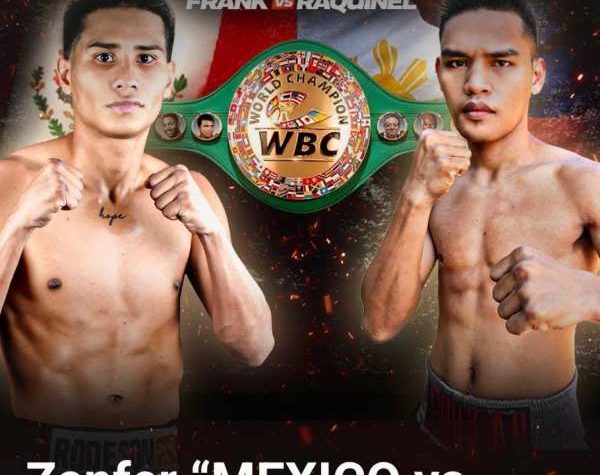
The new evolution of streaming services wanting sports content has been a boon to the economics of combat sports, but there are long-term questions worth asking.
This past month has seen three major stories break related to the future of MMA and boxing delivery, all of which seem to offer more of a glimpse into the future of combat sports.
The question is: When is that future? And is that future being compromised by the spending habits of the present?
Earlier this month, HBO announced that it was getting out of the boxing business after 45 years of being regarded as the home of the sport in the United States. At times over the past five decades, HBO was credited with being the entity that kept a declining sport alive.
But boxing today has multiple promotions on multiple outlets, including ESPN and FOX, that will carry big fights on stations with far more exposure than HBO ever had. The loss of HBO, while shocking because of its history, comes at a time when more viewers will have more exposure to significant boxing names than at any other time in recent memory. Showtime is also staying in the boxing business. Both ESPN+ and DAZN — two streaming services that have heavily invested in combat sports — are also strongly in that game. If anything, the problem is that there is too much product out there compared to the past, and how much viewers are willing to watch.
But for MMA, between the UFC’s ESPN deal which goes into effect in January for the U.S., its just announced deal with Eleven Sports in the U.K., as well as Bellator’s first few DAZN exclusive events which took place this month, more shows are moving away from television and onto streaming platforms.
In addition, the UFC signed its new exclusive broadcasting deal in Germany and Austria with DAZN, a three-year contract that starts this weekend. DAZN will carry all shows, including pay-per-views, as well as more than 100 hours of UFC content.
“With UFC, the global MMA leader, DAZN is expanding its martial arts portfolio and becoming the first point of content for martial arts fans in Germany and Austria,” said DAZN executive vice president Thomas de Buhr. “UFC 229 [was] the perfect prelude to working together over the next three years.”
“DAZN has been a great partner for UFC in Italy and Japan and we look forward to further promoting this great relationship and complementing the UFC Fight Pass in Germany and Austria,” said the UFC’s David Shaw.
In the case of ESPN, to justify its $150 million in spending on the UFC deal, the UFC will need to add roughly 2.5 million or more new regular subscribers. Keep in mind that UFC Fight Pass, at last report, is after many years hovering around 450,000 subscribers.
In taking the money from streaming services, the promoters are in return accepting less exposure, which relates to the value of not just sponsorships, but the ability to market fighters on the way up. Less exposure means less of a chance to create new stars and less of a chance to increase product popularity.
Bellator had its deepest show of the year last month in San Jose. A live crowd of 11,000 fans saw a battle of champions, a legends fight, a welterweight Grand Prix tournament fight and match No. 5 in the career of Aaron Pico.
It was also Bellator’s first show in its history not to air on television or pay-per-view. DAZN is free for its first month, so there was no cost barrier keeping people from watching. And unlike with television, where there are ratings, streaming services are private at this point with their numbers, so there is no way of knowing just how many people watched as compared to if the show was on television.
In theory, whether an event is on free television or a free streaming service shouldn’t make much difference. Netflix and YouTube viewing is more than mainstream. The UFC’s fan base, which is generally younger than most sports aside from soccer, is likely more tech savvy since its news coverage, unlike most sports, has been more internet-based than based in traditional media from the start.
Yet, the only true stat to measure this tells a very different and perhaps scary story about the current consumer moves to this futuristic direction.
The February UFC on FOX 28 show was preempted in the San Francisco Bay Area on KTVU, Ch. 2, due to local programming. A typical UFC on FOX show would draw about 30,000 viewers in that market.
With those viewers only having streaming options to watch the card, the total streaming numbers on FOX Sports GO and FOX Now were 11,067. The prior UFC on FOX show’s streaming number was 10,694. The one before that was 15,521. In other words, rather than watching via streaming just seven months ago, of the 30,000 regular viewers, all but a few hundred didn’t bother to watch when the show wasn’t on television. And that was for free, and not a service that requires a monthly cost that will further limit viewership.
At Bellator 206, when it comes to the future of the company, one could argue the biggest fight on that card likely was Pico’s win over Leandro Higo. Pico passed a big test with his first-round stoppage over a recent title contender. That was also a textbook example of the type of fight a promotion would want as many people as possible to see, with the idea that if fans get in on the ground floor with a new star like Pico, they’ll be more apt to follow them on their journey to the top.
But with many of Bellator’s biggest shows moving to streaming, and with a monthly cost now associated to it, yes, the hardcore MMA fans will see those type of fights, but that audience was going to be there anyway. The whole goal is to create stars to expand a company’s audience.
For example, Ilima-Lei Macfarlane showed some television drawing power in her last fight, which did the second-best numbers on Paramount of any Bellator show since the end of February. But her Dec. 15 Bellator women’s flyweight title defense against Valerie Letourneau — an event in which the viewer at home is likely to see Macfarlane get a star-type reaction in her home state of Hawaii — will be aired exclusively on DAZN. This will be after DAZN turns into a paying service. Exactly how much that will cut down on the show’s viewership is uncertain, but the number is likely significant. If the UFC on FOX example is a predictor, it’s actually scary.
For the UFC, the situation is different. Its television numbers should rise in 2019, just because the base audience for ESPN is larger than for FS1. But more of the promotion’s events will be streaming exclusives on ESPN+ — 20 in all, as well as all but the top three hours of 10 other shows.
Meanwhile, the UFC vs. Bellator battle will take up a different form in the U.K.
Bellator is aggressively going into that market in 2019, with terrestrial television on Ch. 5 and regular live prime time shows in the country built around local fighters.
The UFC, by far the dominant promotion in the U.K. today, will limited to a streaming platform in 2019, Eleven Sports, a couple of pay-per-views, and one or two local shows.
That doesn’t mean Bellator will surpass the UFC in that market, but given the exposure levels, that is certainly possible. And behind-the-scenes, Eleven is in talks with Virgin Media to carry the channel on cable, so if that happens, Eleven Sports will be more akin to a paid channel, like an HBO or a Showtime in the U.S., as opposed to a pure streaming platform.
In time, the market will sort out what products are really worth. Sports rights have continued to escalate. People have talked about a bubble bursting for decades, and it never happens. The only danger is if lower visibility in the long run will hurt the perception and value of the products themselves.
The UFC being a regular feature on ESPN, even with less television hours, is likely to maintain or increase its perception, even if the new deal may lead to a decline in viewership for more than half of their events next year. Whether the ESPN-exclusive shows will do the same numbers the FOX specials did is uncertain. The odds are that the ESPN shows will beat the numbers the FS1 shows did, but there will be fewer of them.
As things stand, most of Bellator’s events will remain on Paramount, so DAZN is more akin to running some low-cost pay-per-views to go with the regular television shows.
But whether the big money being spent by the streaming services for the product is economically justified, that’s something the jury is very much still out on.
Still, these streaming services are paying both companies revenues that will more than make up for the revenues perhaps lost from the slowing down of new star creation. The real question will come when these deals are up. For both the UFC and Bellator, the ability to keep those deals will depend on whether they lead to enough new paying subscribers to their respective streaming services to make the crazy high fees economically justifiable.
That’s really the next moment of truth, but it’s also years away.





More News
Quiñonero fights Verdadero in Resbak 2
Resbak 2 at Malungon, Sarangani Province on July 12
Garde stops Baliente in 1st round in “Resbak”